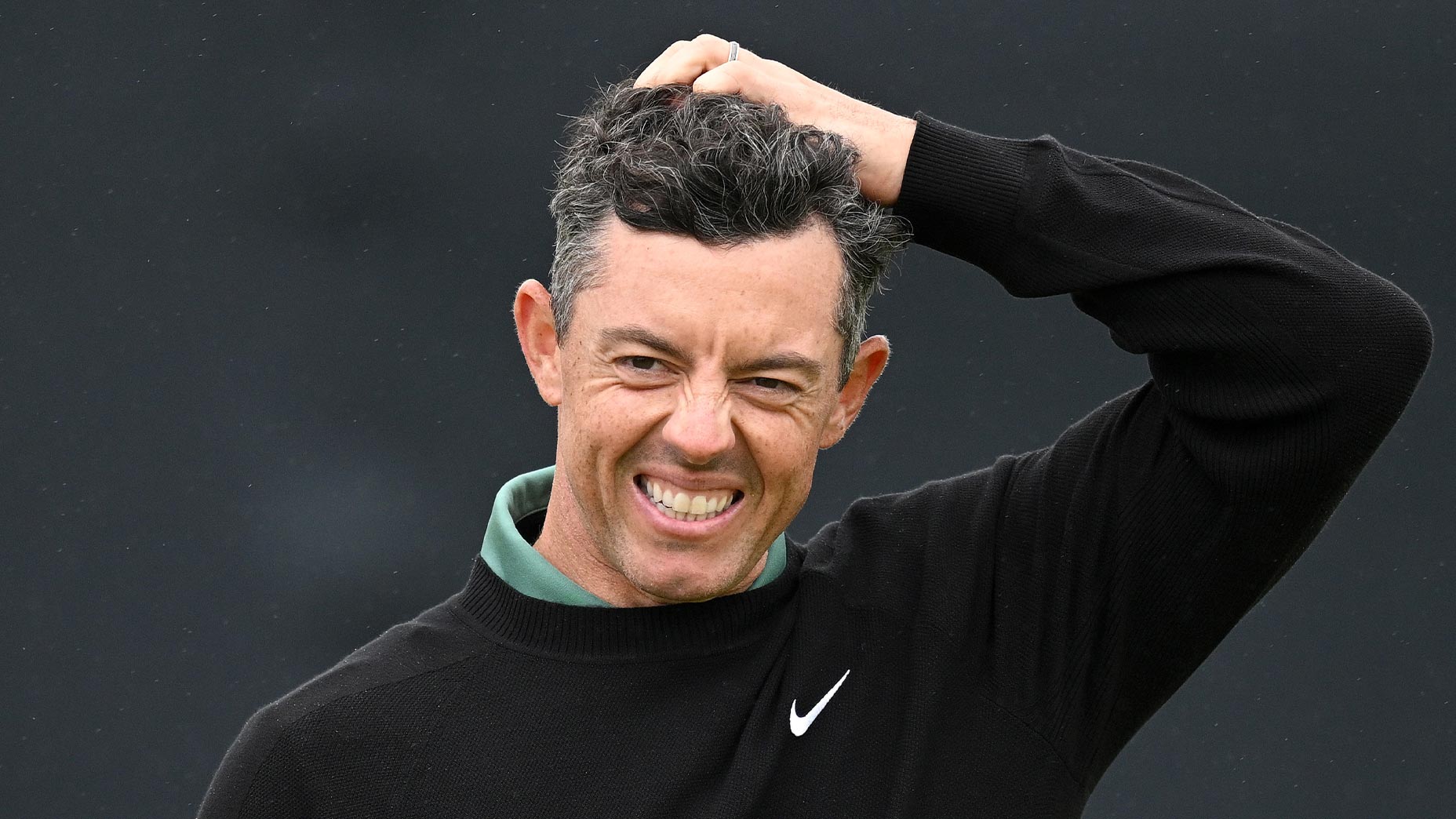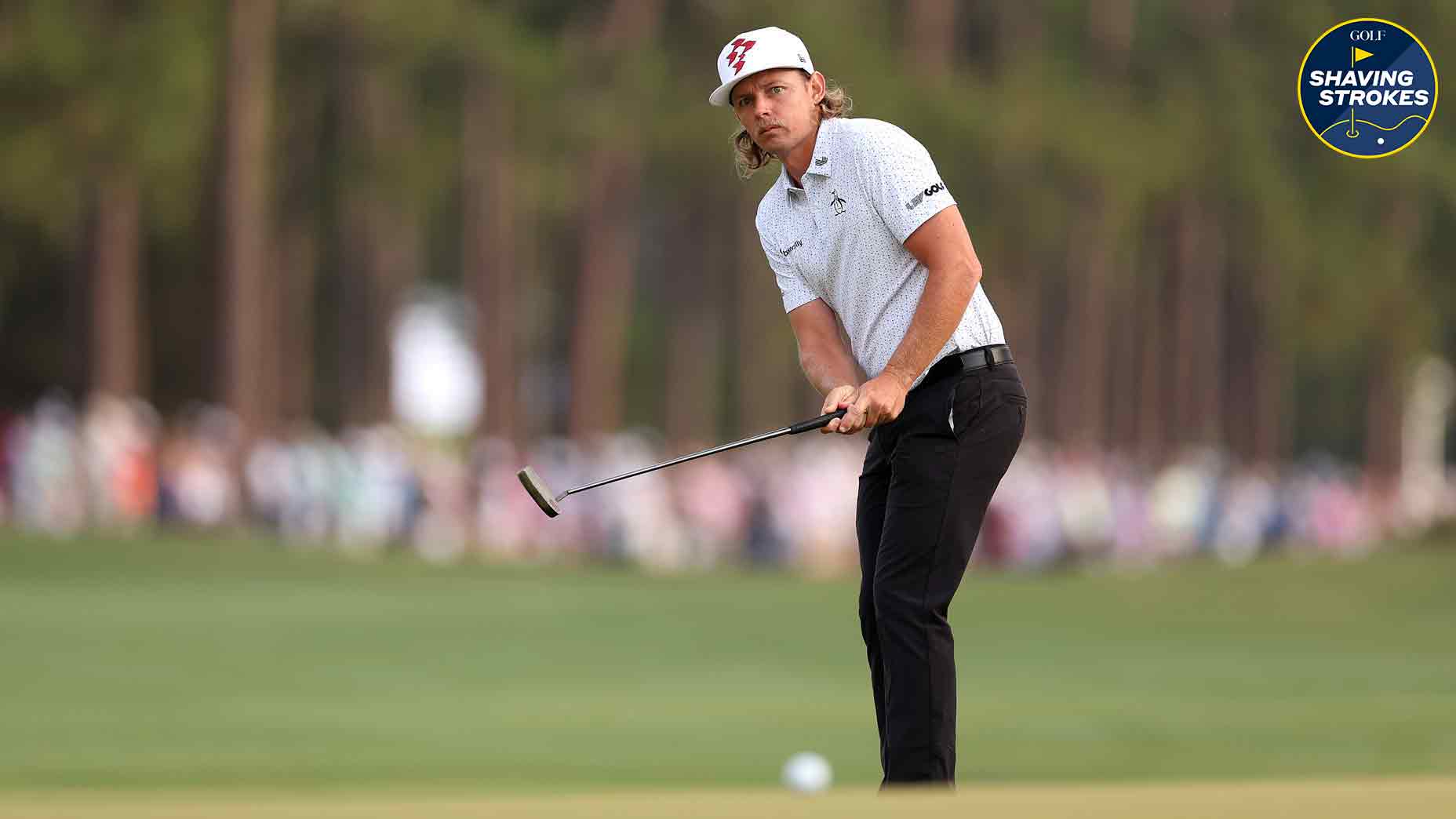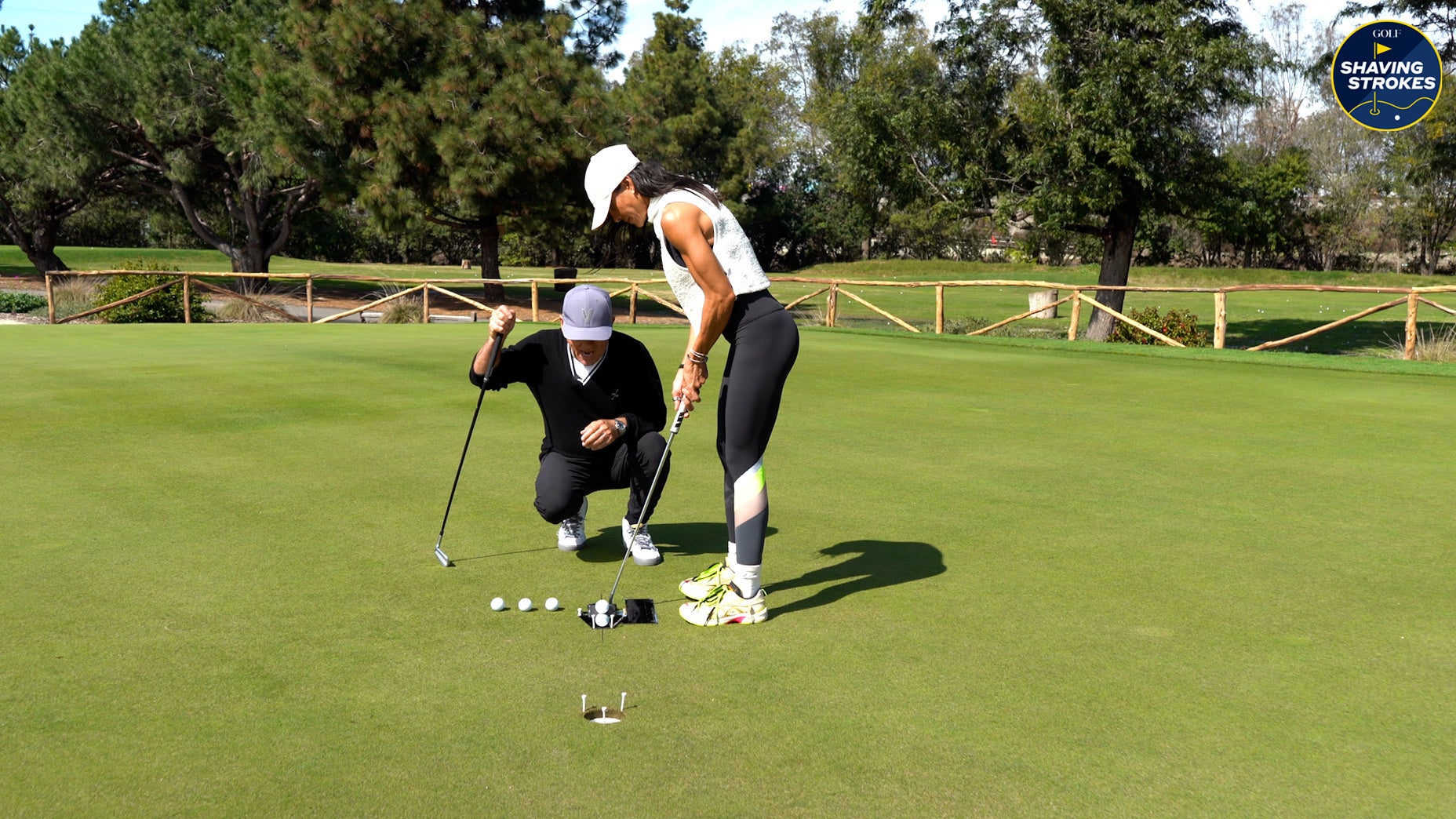Why tee height might decide the 2024 Open Championship winner

The height of the tee is just one big factor that players need to pay attention to at this year's Open Championship.
Getty Images
Welcome to Shaving Strokes, a GOLF.com series in which we’re sharing improvements, learnings and takeaways from amateur golfers just like you — including some of the speed bumps and challenges they faced along the way.
Something as simple as tee height might not cause much anxiety for you or me on the golf course, but at the 2024 Open Championship, it could be the difference between hoisting the Claret Jug and not.
Sure, there are plenty of factors that players will need to deal with — with the unpredictable weather being amongst the most important, as well as the lethal bunkers — but for that reason, every single decision (big and small) will be pivotal over the next few days.
With conditions expected to be wet and rainy with a steady wind, how a player tees it up will help determine their ball flight. Should they keep it higher in the air, it may be impacted by the weather and lead to a difficult second shot. But tee it lower, and the ball may avoid much of the nasty weather, leading to more fairways hit — and the ability to stay aggressive on approach shots.
So how important is tee height at the Open Championship? GOLF Top 100 Teacher David Woods explains below, and says the players who avoid the temptation to try and bomb it with their driver could be the ones seeing the most success at Royal Troon.
How tee height will impact this year’s Open Championship
Now that the 152nd Open Championship is underway, anyone watching the first round understands how difficult a test Royal Troon is. The course has eaten players up, with many of the top choices to win the tournament shooting way over par on Thursday.
But the course isn’t the only difficult part, as the weather in Scotland is notoriously unpredictable, throwing a mix of wind, rain and sunshine at players — which makes it even harder to get into a groove during a round.
So what’s it going to take to win this year’s final major championship? Lots of patience, as the winner must navigate the elements and avoid deadly bunkers.
That’s why hitting fairways at Royal Troon is even more important than other places — and it all starts with a player’s tee height.
The Open Championship course is always different from others that these players usually compete on each week. Instead of teeing it high and flexing their muscles with the driver, doing the opposite may be the best strategy this week.
For instance, Rory McIlroy spoke earlier this week about two types of tee shots that he tends to use.
The first is a high towering bomb, where he tees the ball slightly higher and maintains a fair amount of right side bend in his downswing — which enables him to hit up on the ball for a high launch angle and low-spinning bomb.
But the second type of tee shot is more of a fairway finder, where he uses a lower tee height. When using this alternative type of drive, he keeps both his right side and right hip higher during the downswing, which helps him “cover the ball” — which effectively reduces his angle of attack.
While this type of tee shot may travel lower and shorter with more spin, it also gives McIlroy a greater feeling of control to find more fairways — which is especially important at the Open Championship in order to avoid the blustery conditions.
Unfortunately, McIlroy struggled in Round 1 (shooting a surprising seven-over 78). Whether it was due to bad decision-making, poor execution, or a little bit of both, he’ll have to regroup heading into Round 2 on Friday.
Despite McIlroy’s struggles, other players were able to successfully adjust their tee height and ball-striking strategy on Thursday — like Shane Lowry and Justin Thomas, who are both near the top of the leaderboard. So expect to see lots of this during the next few days.
In fact, I vividly remember Henrik Stenson hitting low-trapped 3-woods at Royal Troon in 2016 to edge Phil Mickelson for the Open Championship. As they say, imitation is the sincerest form of flattery — so players would be wise to follow a similar game plan this week.
Rukket Sports SPDR Portable Driving Range
$319.99
View Product















